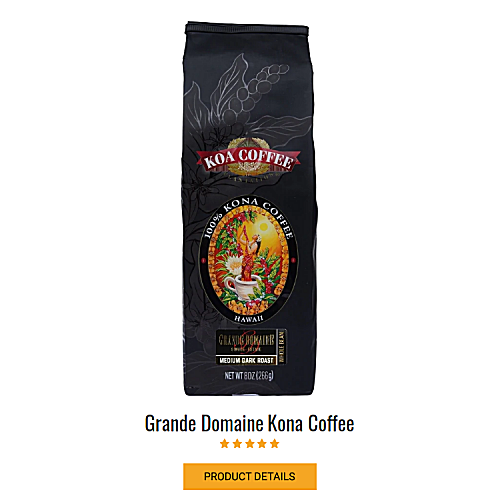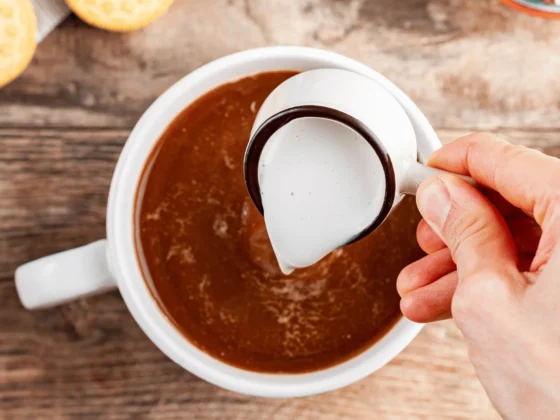Deciding between cafe con leche vs latte can be a delightful dilemma for coffee lovers. Each of these beverages, with its own rich history and cultural significance, offers a unique flavor and experience. This in-depth guide will delve into the historical backgrounds, flavor characteristics, and nutritional aspects of these popular drinks. Whether you’re an experienced coffee enthusiast or a curious newcomer, understanding the distinctions and similarities between both of these beverages will enhance your coffee appreciation and help you make an informed choice for your next coffee indulgence.
Cafe Latte vs Cafe Con Leche: Key Differences
- Milk to Espresso Ratio: A key distinction between both coffee drinks is the ratio of milk to espresso. Lattes typically have a greater proportion of milk, resulting in a creamier texture, whereas cafe con leche usually maintains a 1:1 ratio, offering a more pronounced coffee flavor.
- Flavor Customization: Lattes are widely known for their versatility in flavor customization. They can be infused with a variety of coffee syrups and spices like vanilla, caramel, or cinnamon. Cafe con leche, on the other hand, is traditionally enjoyed in its classic form without additional flavorings, focusing on the natural taste of coffee and milk.
- Cultural Origins and Traditions: The origins of these drinks are deeply rooted in their respective cultures. The cafe latte, originating in Italy, is a cornerstone of Italian breakfast culture and is widely popular in cafes globally. In contrast, cafe con leche, hailing from Spain, holds a significant place in Spanish and Latin American coffee traditions, often enjoyed in homes and as part of social gatherings.
- Serving Style and Presentation: Cafe lattes are often presented in larger cups and are notable for their artistic flair, especially with the creative latte art on the foam. Cafe con leche, in contrast, is typically served in smaller, simpler cups, with an emphasis on the coffee’s robust flavor rather than visual presentation.
- Nutritional Content: There is a notable difference in the nutritional content of the two beverages. Lattes, with their higher milk content, generally have more calories and fat, especially when made with whole milk. Cafe con leche, containing less milk, is usually lower in calories and fat, and this difference becomes more pronounced if sweeteners or flavored syrups are added to lattes.
What is a Cafe Con Leche?

Cafe con leche, a staple in Spanish coffee culture, is a widely enjoyed beverage known for its simplicity and rich flavor. This classic drink, translating to “coffee with milk,” blends the robustness of coffee with the creaminess of milk, offering a delightful experience to its admirers. (1)
Origin and History
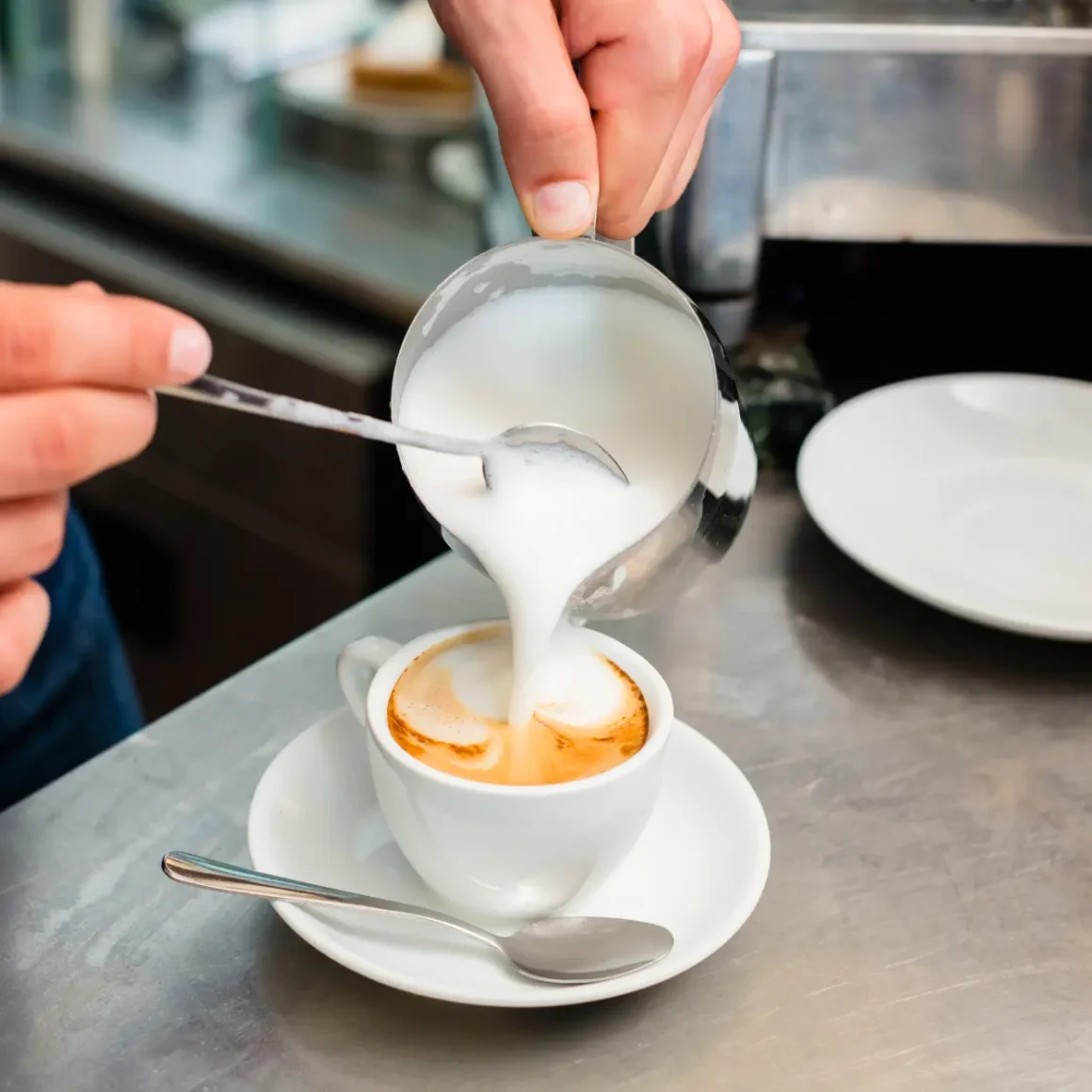
The history of this delectable concoction is deeply rooted in Spain, reflecting the country’s coffee traditions. Its journey from a local favorite to a global sensation is intriguing:
- Spanish Roots: Originating in Spain, this coffee drink quickly became a morning essential, typically enjoyed with breakfast.
- Global Spread: Its popularity extended beyond Spain, particularly influencing coffee culture in Latin American countries and regions with Spanish heritage.
- Cultural Significance: Over time, this concoction has become more than just a beverage; it’s a social staple, often associated with gatherings and daily routines in various cultures.
Ingredients and Preparation

The preparation of this coffee beverage is straightforward, yet it requires precision to achieve the perfect balance:
- Essential Ingredients: The drink primarily consists of equal parts of strong espresso and scalded milk.
- Brewing the Espresso: The process starts with brewing a robust espresso, which forms the base of the drink.
- Adding Steamed Milk: Following the espresso, an equal amount of scalded milk is mixed in, softening the coffee’s intensity and adding creaminess.
Taste and Flavor Profile
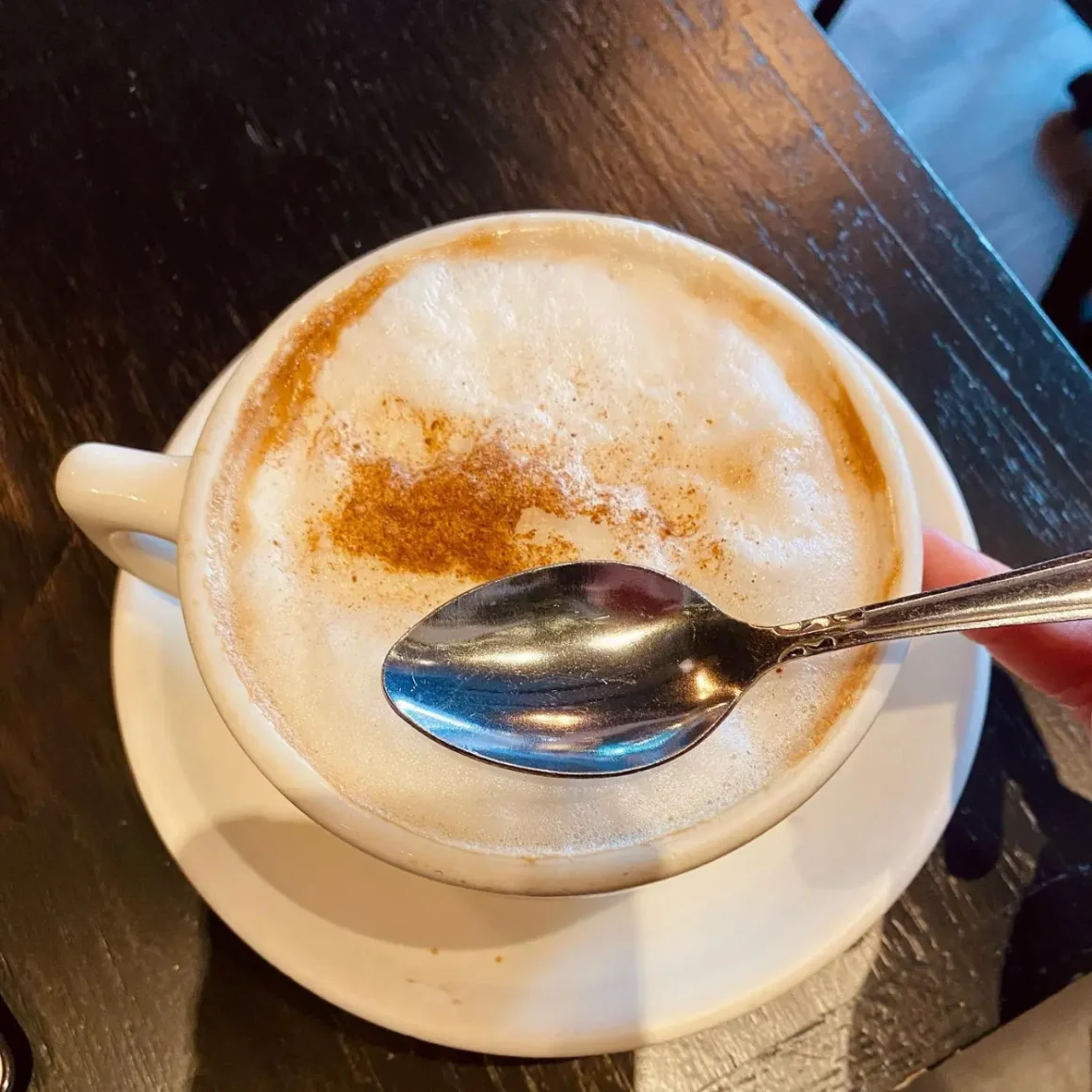
The flavor profile of this delectable drink is a delightful balance of strength and smoothness, appealing to a wide range of palates:
- Rich Coffee Flavor: The espresso component offers a deep and sometimes bitter coffee taste, providing the drink’s robust foundation.
- Creamy Smoothness: The scalded milk introduces a creamy texture and a hint of sweetness, perfectly balancing the espresso’s strong flavor.
- Customization: Drinkers often adjust the coffee-to-milk ratio according to their preference, making this delightful coffee drink a versatile choice for various taste buds.
To sum up, What is a cafe con leche? is not just a question about a beverage; it delves into a rich cultural tradition. This concoction, with its harmonious blend of robust coffee and creamy milk, is more than a drink – it’s a symbol of culinary simplicity and cultural richness that resonates with coffee lovers globally.
What is a Latte?

A latte, also known as a Caffè Latte, is a coffee drink that has become a beloved part of café culture around the world. Known for its smooth and creamy texture, a latte combines espresso with steamed milk and a light layer of foam, creating a perfect balance of richness and subtlety.
Origin and History
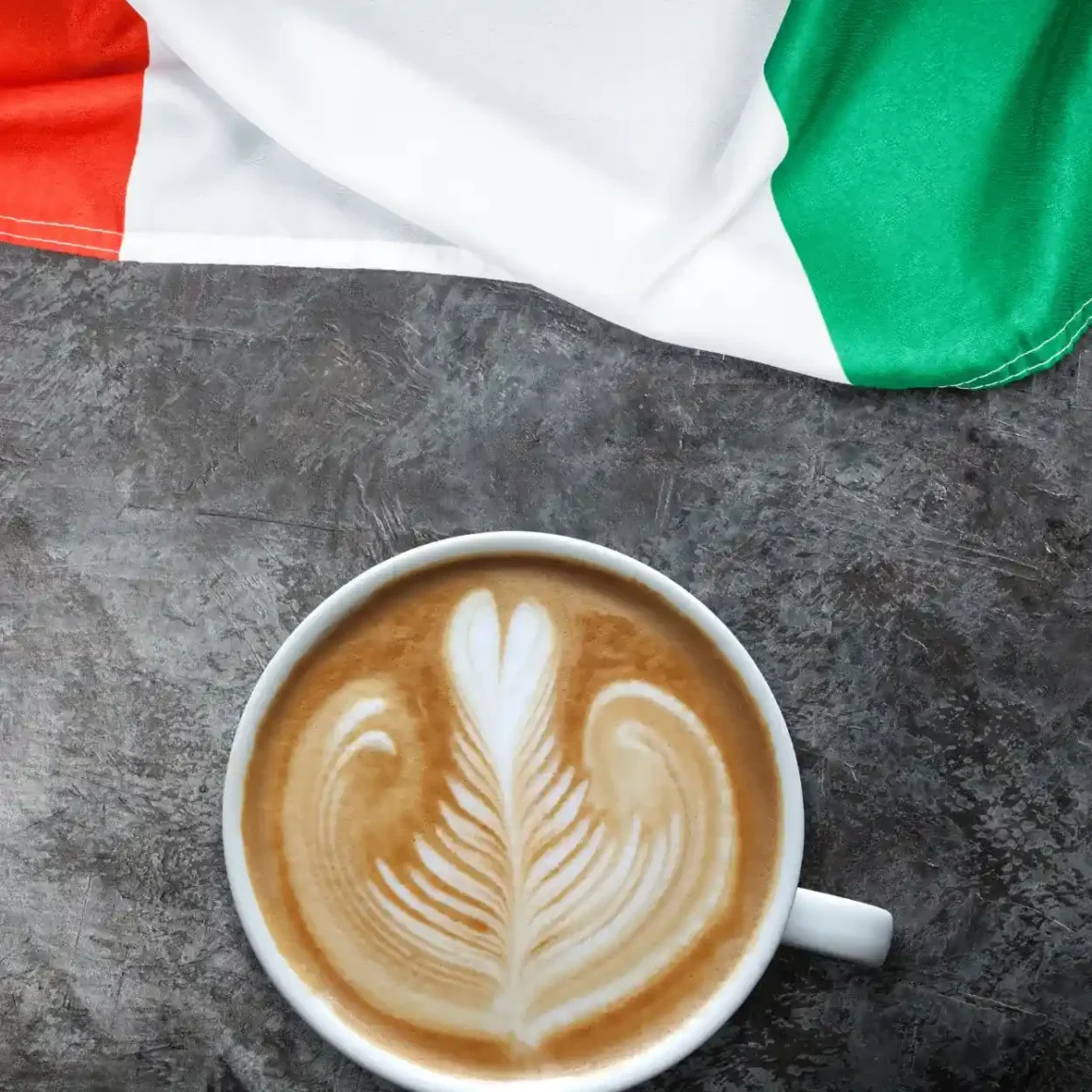
The origin of the latte is an interesting blend of tradition and evolution:
- Italian Roots: The latte, meaning ‘milk coffee’ in Italian, has its origins in Italy. Traditionally, Italians would enjoy a simple breakfast of coffee and milk. (2)
- Evolution Over Time: As coffee culture spread globally, the Italian Caffè Latte evolved into the modern latte, gaining popularity, particularly in the United States and other Western countries.
- Cultural Adaptation: Different cultures have adapted the basic latte recipe, adding various flavors and techniques, thus enriching its history and diversity.
Ingredients and Preparation

The creation of a latte involves a careful process that highlights the quality of its ingredients:
- Core Ingredients: The fundamental components of a latte are espresso and steamed milk, with a small layer of foam.
- Espresso First: A shot of espresso is the base of the drink, known for its concentrated flavor and intensity.
- Milk and Foam: Steamed milk is then poured over the espresso, with the barista often creating a thin layer of microfoam on top. This gives the latte its characteristic creamy texture.
Taste and Flavor Profile

The taste and flavor profile of a latte is marked by its subtlety and versatility:
- Balanced Flavor: The espresso provides a rich and bold coffee flavor, which is mellowed by the creaminess of the steamed milk.
- Texture and Sweetness: The milk reduces the bitterness of the espresso and adds a natural sweetness to the drink. The foam on top adds a smooth and velvety texture.
- Customization Options: While a classic latte has a straightforward flavor profile, it can be customized with various syrups and spices, such as vanilla, caramel, or cinnamon, catering to a wide range of preferences.
Overall, What is a latte? extends beyond its basic definition as a coffee drink. It is a testament to the evolving nature of coffee culture, offering a versatile and enjoyable experience to coffee lovers around the world.
Cafe Con Leche vs Latte: Cultural Significance

The comparison of cafe latte vs cafe con leche reveals not just a difference in coffee preparation but also a deep cultural significance. Both beverages, hailing from distinct coffee traditions, have become symbols of their respective cultures and have adapted uniquely as they spread globally.
Cafe Con Leche Around the World
This coffee drink has a unique presence in various cultures:
- Spanish and Latin American Influence: As previously discussed, in Spain and many Latin American countries, this delectable beverage is a morning ritual, often enjoyed with a light breakfast.
- Adaptation in the United States: In the U.S., particularly in areas with a strong Hispanic influence like Miami, this delightful concoction has become a staple in local coffee shops.
- Global Variations: Around the world, this coffee drink has been adapted to local tastes, with variations in the type of milk or coffee used, reflecting the diversity of its acceptance.
Latte Culture Globally
The latte, with its roots in Italy, has a distinct cultural footprint:
- Italian Beginnings and Global Spread: Originally a morning drink in Italy, the latte has gained immense popularity in countries like the United States, Australia, and the UK.
- Coffee Shop Culture: Lattes have become synonymous with modern coffee shop culture, often associated with artisanal coffee and specialized barista art.
- Variety and Innovation: The versatility of lattes is evident in the myriad of flavors and styles available, from pumpkin spice lattes to iced versions, showcasing its adaptability to trends and regional tastes.
Rituals and Traditions
Both drinks are steeped in rituals and traditions that highlight their cultural importance:
- Social Aspect: In many cultures, both cafe con leche and lattes are more than just beverages; they are a reason to gather, socialize, and take a break from the day.
- Preparation Rituals: The preparation of these drinks, whether at home or in a cafe, often follows specific rituals, emphasizing the importance of the process and the enjoyment of the drink.
- Adaptation to Local Customs: As these beverages have traveled, they’ve been incorporated into local customs, becoming part of the daily routine and special occasions in various societies.
In essence, the cafe latte vs cafe con leche debate extends into the realm of cultural significance, each representing a rich history, evolving traditions, and a cherished place in the coffee cultures of the world.
Nutritional Comparison Between Latte and Cafe Con Leche
Understanding the nutritional differences between latte vs cafe con leche provides useful information for health-conscious consumers. Both beverages, while similar in their basic components, can differ significantly in their nutritional profiles, affecting their overall impact on diet and health.
Caloric Content
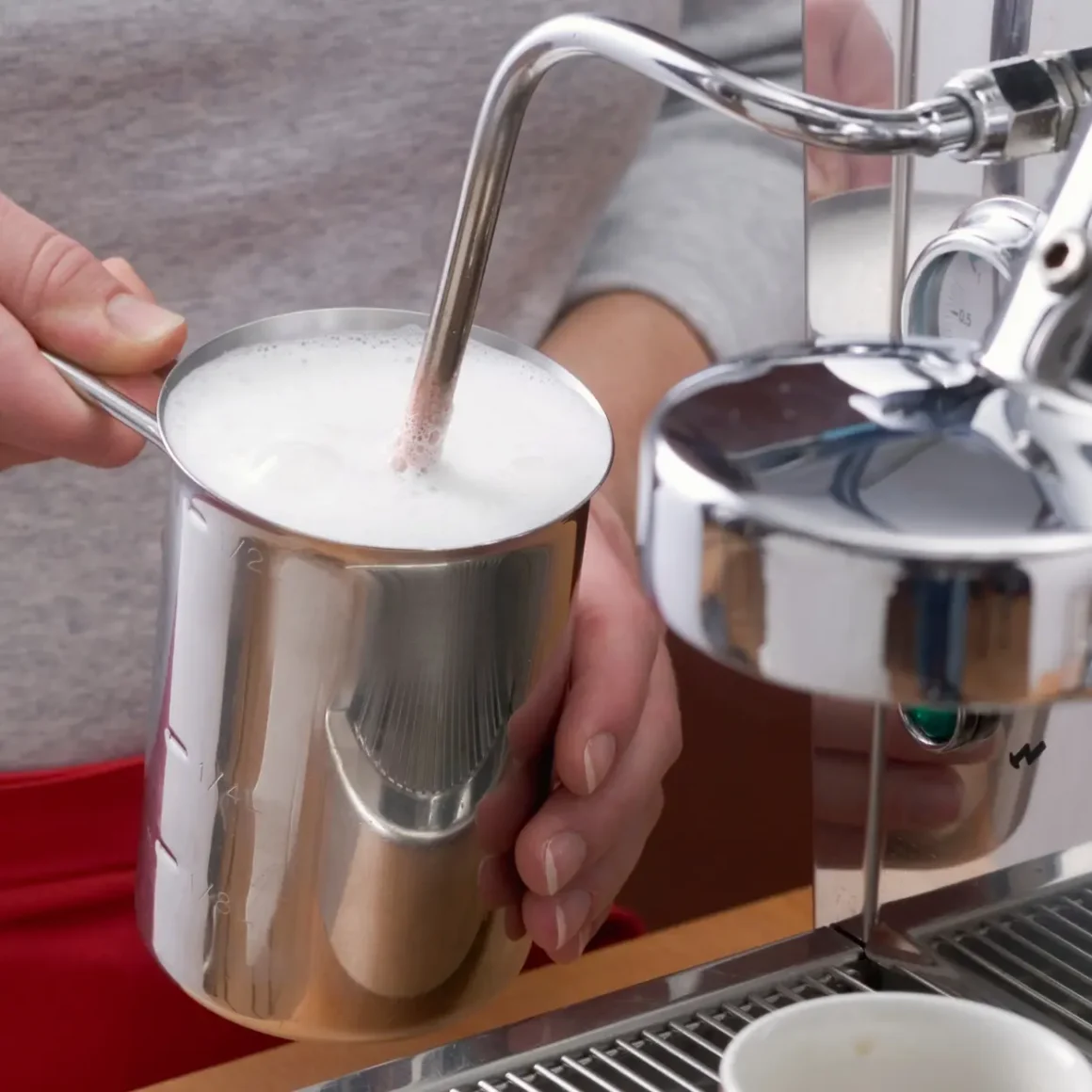
The caloric content of these drinks can vary depending on the specific ingredients used:
- Latte: A standard latte typically contains more calories due to the higher volume of milk. For example, a 16-ounce latte made with whole milk can have around 180 calories.
- Cafe Con Leche: This coffee drink usually has fewer calories compared to a latte, as it traditionally contains a lower proportion of milk. A similar 16-ounce serving made with whole milk can contain around 112 to 130 calories.
- Variables: The calorie count can fluctuate based on the type of milk (whole, skim, plant-based) and any added sweeteners or flavorings.
Fat and Sugar Levels

The fat and sugar content in these beverages are also key nutritional considerations:
- Fat Content: Lattes, when prepared with additional milk, typically possess a greater fat content, particularly when whole milk is used. A typical latte may contain as much as 12 grams of fat. Conversely, a cafe con leche boasts a lower fat content, amounting to only 2.6 grams.
- Sugar Levels: Cafe con leche, in its traditional form, generally has lower sugar levels, unless it is sweetened, with approximately 17 grams of sugar. On the contrary, a latte, particularly in flavored varieties, may include added sugars, sometimes reaching up to 18 grams. (3)
- Milk Type Impact: The type of milk used (skim, 2%, whole, or plant-based) will significantly affect both the fat and sugar content of the drink.
Caffeine Content

Caffeine content is a crucial aspect for many coffee drinkers:
- Espresso Base: Both drinks are typically made with one or more shots of espresso, so their caffeine content is relatively comparable. A single shot of espresso contains about 63 mg of caffeine.
- Serving Size Impact: The total caffeine content will depend on the number of espresso shots used and the serving size of the drink.
- Consistency: It’s worth noting that the caffeine content can vary based on the coffee bean type and the brewing method.
Overall, when comparing both of these coffee drinks, it’s evident that both drinks have their unique nutritional profiles. A latte generally contains more calories and fat, primarily due to its higher milk content, while cafe con leche is typically lower in calories and can have less sugar and fat, depending on the preparation. The caffeine content in both is similar, depending on the amount of espresso used. Understanding these differences can help individuals make more informed choices based on their dietary preferences and needs.
Making the Choice

When selecting between both beverages, various aspects come into play. Each coffee drink has its unique appeal and characteristics, making the choice largely dependent on individual preferences and specific circumstances.
Factors to Consider
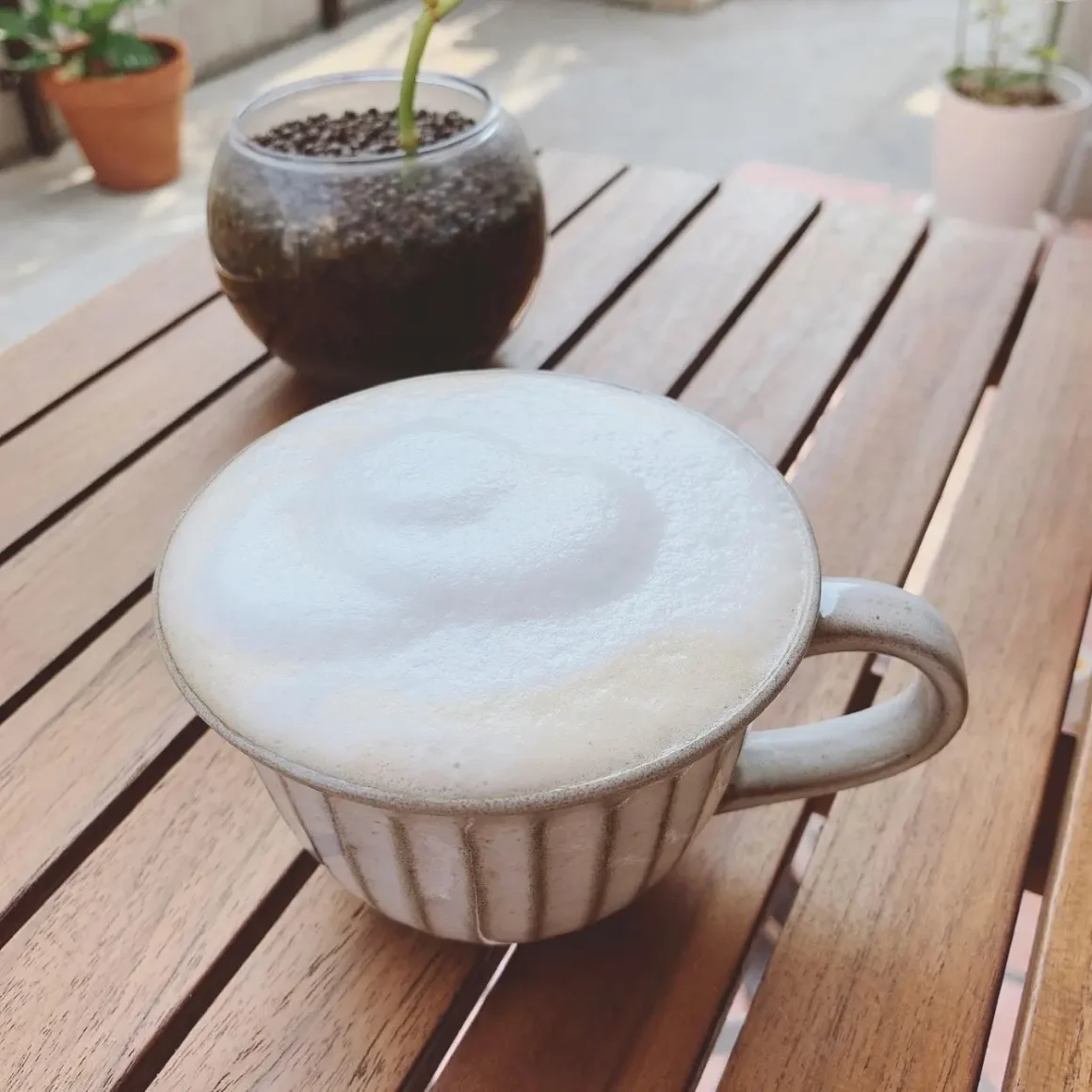
Several key factors can influence your decision:
- Nutritional Content: Consider the calorie, fat, and sugar content of each drink. Lattes typically have a higher calorie and fat content due to more milk, whereas cafe con leche generally has fewer calories.
- Caffeine Intake: Both drinks contain similar amounts of caffeine, but this can vary based on the number of espresso shots and the size of the drink.
- Dietary Restrictions: For those with dietary restrictions, the type of milk used can be a crucial factor. Plant-based milks can offer a lower calorie and fat alternative.
- Flavor and Texture: The intensity of the coffee flavor and the creaminess of the milk are also important considerations, as they differ in each drink.
Personal Preferences

Individual taste and preferences are paramount in making a choice:
- Taste Profile: If you prefer a stronger coffee flavor, cafe con leche might be more suitable. For a creamier, milder drink, a latte would be ideal.
- Customization: Consider how much you enjoy customizing your drink. Lattes offer more versatility in terms of flavors and additions.
- Cultural or Habitual Leanings: Sometimes, the choice can be influenced by cultural habits or the routine you’re accustomed to.
Final Thoughts

Ultimately, the decision between both coffee drinks involves several key considerations:
- Personal Preference: Your individual taste preference plays a significant role in choosing between these two coffee drinks.
- Specific Needs: Consider your specific dietary needs or restrictions, such as calorie intake, fat content, or lactose intolerance.
- Circumstantial Factors: The choice may be influenced by the circumstances, like the time of day, the meal it accompanies, or the setting.
- Nutritional Content: Evaluate the nutritional aspects of each drink to see which aligns better with your health goals.
In essence, the selection between both coffee drinks is based on your own tastes, health considerations, and lifestyle. Both beverages offer unique experiences and pleasures, enriching the daily ritual of coffee enjoyment.
FAQ
How do cafe con leche and latte differ in terms of taste?
Cafe leche offers a stronger coffee flavor due to the equal ratio of coffee to milk, whereas lattes are creamier and milder, often with added flavors.
Are there any cultural rituals associated with cafe con leche and latte?
Yes, cafe leche is a staple in Spanish and Latin American cultures, often enjoyed in homes, while lattes are integral to Italian and broader Western coffee shop culture, known for their artistic presentation.
Which one is healthier, cafe con leche or latte?
Generally, cafe con leche is healthier due to its lower calorie and fat content, attributed to the lesser amount of milk compared to a latte.
How can one decide between both beverages based on personal preferences?
Your choice should depend on flavor preference (strong coffee vs. creamy and mild), desire for customization, and nutritional considerations like calorie and fat intake.



